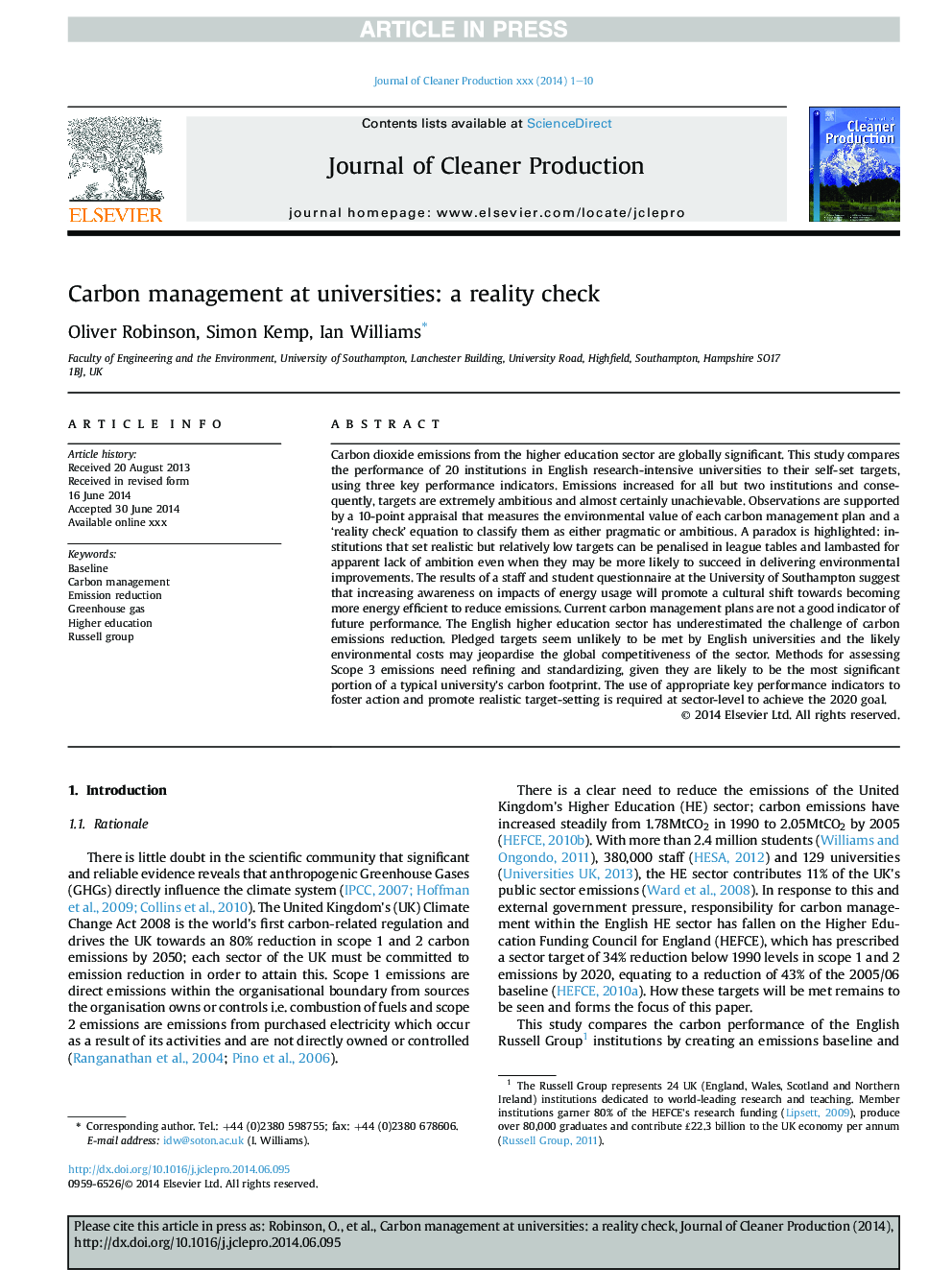| Article ID | Journal | Published Year | Pages | File Type |
|---|---|---|---|---|
| 8103155 | Journal of Cleaner Production | 2015 | 10 Pages |
Abstract
Carbon dioxide emissions from the higher education sector are globally significant. This study compares the performance of 20 institutions in English research-intensive universities to their self-set targets, using three key performance indicators. Emissions increased for all but two institutions and consequently, targets are extremely ambitious and almost certainly unachievable. Observations are supported by a 10-point appraisal that measures the environmental value of each carbon management plan and a 'reality check' equation to classify them as either pragmatic or ambitious. A paradox is highlighted: institutions that set realistic but relatively low targets can be penalised in league tables and lambasted for apparent lack of ambition even when they may be more likely to succeed in delivering environmental improvements. The results of a staff and student questionnaire at the University of Southampton suggest that increasing awareness on impacts of energy usage will promote a cultural shift towards becoming more energy efficient to reduce emissions. Current carbon management plans are not a good indicator of future performance. The English higher education sector has underestimated the challenge of carbon emissions reduction. Pledged targets seem unlikely to be met by English universities and the likely environmental costs may jeopardise the global competitiveness of the sector. Methods for assessing Scope 3 emissions need refining and standardizing, given they are likely to be the most significant portion of a typical university's carbon footprint. The use of appropriate key performance indicators to foster action and promote realistic target-setting is required at sector-level to achieve the 2020 goal.
Related Topics
Physical Sciences and Engineering
Energy
Renewable Energy, Sustainability and the Environment
Authors
Oliver Robinson, Simon Kemp, Ian Williams,
